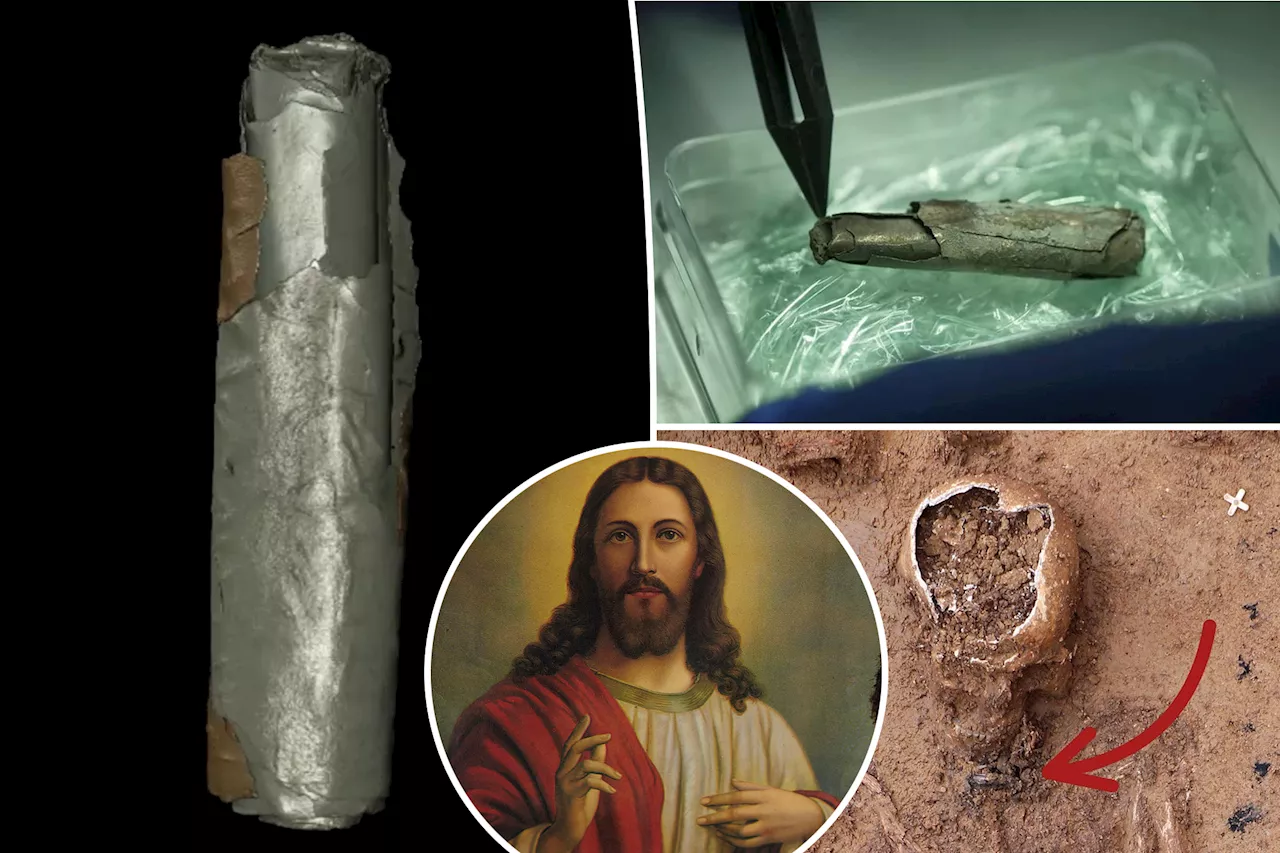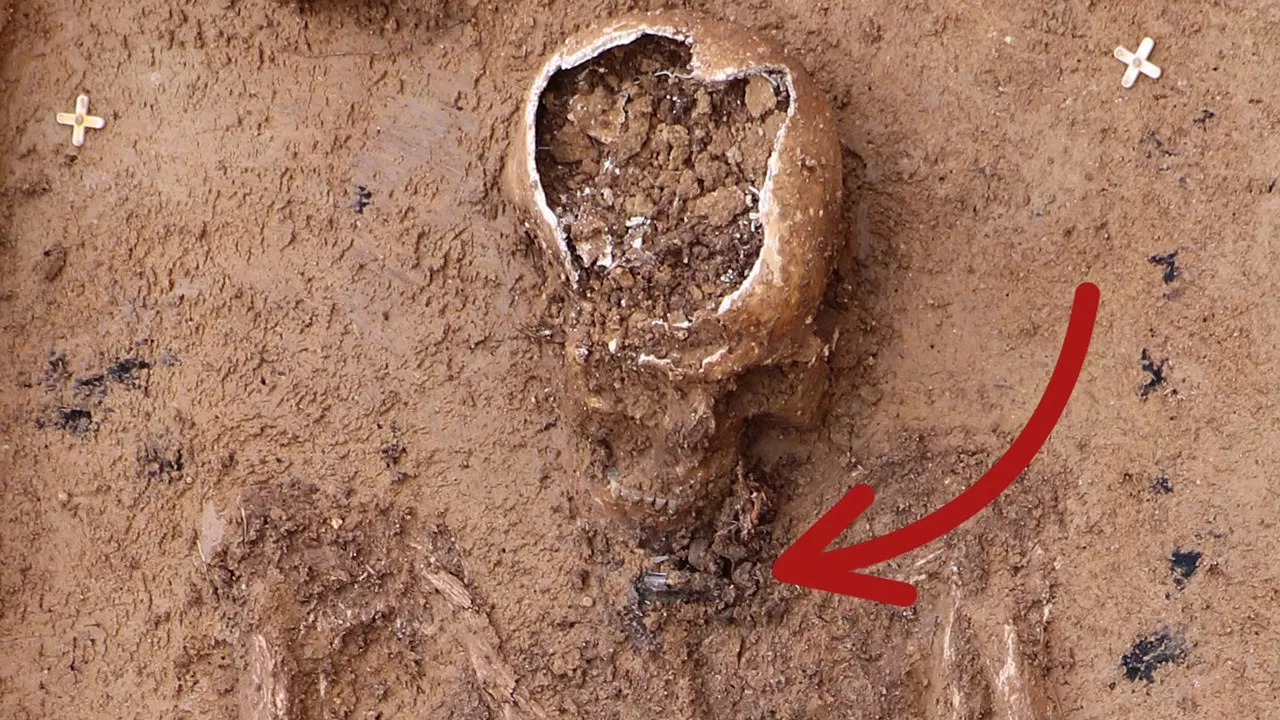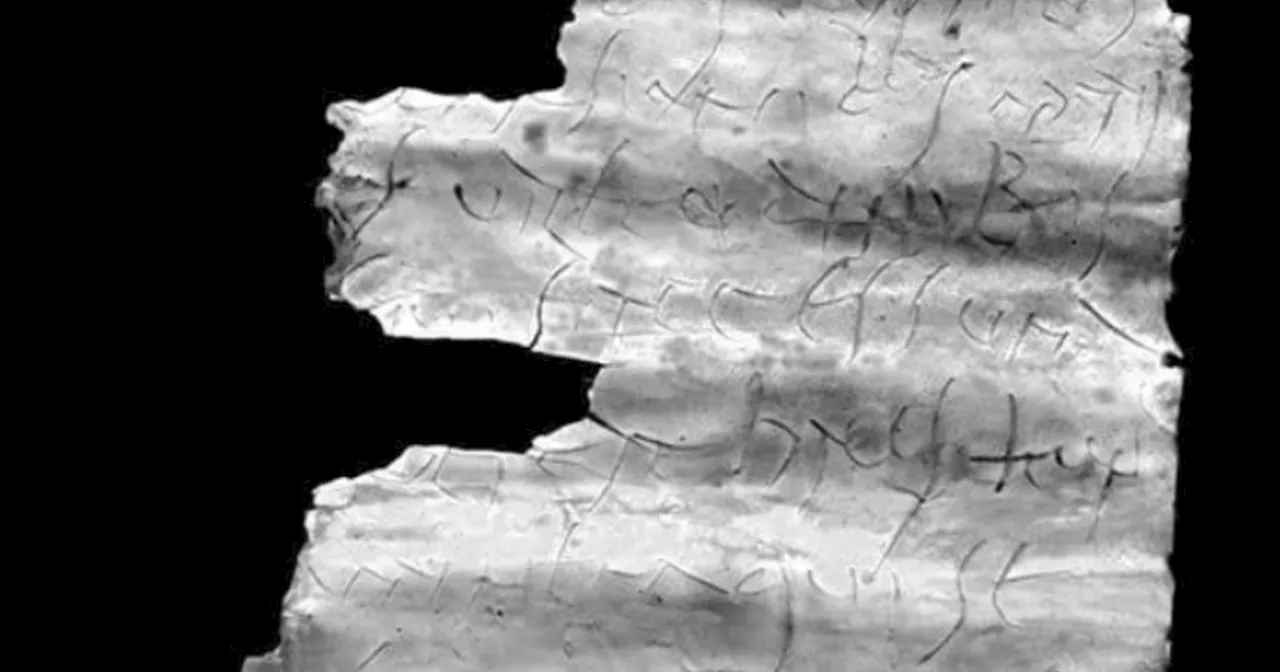An 1800-year-old amulet unearthed in Germany contains a tiny scroll with Latin text that sheds new light on the spread of Christianity in Northern Europe. The discovery pushes back the timeline of Christianity's presence in the region and suggests its gradual expansion into rural areas.
Learn how researchers use technology and patience to translate a scroll that writes the history of Christianity ’s spread through Northern Europe .Taking five or six years to read 18 lines of Latin might seem slow. But the painstaking effort was worthwhile, because archeologists who deciphered a tiny note tucked inside a nearly 1800-year-old, 1.4-inch-tall amulet found that the passage shed new light on Christianity ’s spread through Northern Europe .
Archeologists first discovered the amulet in a cemetery just outside Frankfurt during a 2017 to 2018 dig. Based on where they found the amulet in the grave, the archaeologists suspect that the man likely wore it around his neck.in Mainz painstakingly restored the scroll, scanned it with CT to view the words, then translated the text, which they shared in December 2024. It was not an easy task. Because the thin sheet had been rolled up so long, it was creased and pressed, making it hard to see the writing. The scientists used CT scans to reconstruct it, then consulted with theologians and historians to interpret it. Both the time of the amulet’s burial and its location are significant. Its date bumps back evidence of Christianity north of the Alps by about 50 years. Its location in a small, rural outpost, rather than a larger urban area, also suggests the religion was spreading.Researchers found a few other unexpected aspects of the amulet as well. First, the use of Latin was surprising. Most inscriptions from similar amulets at the time used Greek or Roman. Also, the fact that the amulet contained a hidden message and was considered important enough to its owner that he be buried with it speak volumes. The scroll might have been secreted inside the jewelry because Christianity was not yet widely accepted. Its owner wearing it to the grave may have spoken to the importance of its owner’s fait
History Religion Christianity Europe Archaeology Amulet History Latin
United States Latest News, United States Headlines
Similar News:You can also read news stories similar to this one that we have collected from other news sources.
 Ancient engraved amulet could ‘turn back history’ of Christianity, experts claimEarliest evidence of Christianity uncovered in 3rd-century Roman grave
Ancient engraved amulet could ‘turn back history’ of Christianity, experts claimEarliest evidence of Christianity uncovered in 3rd-century Roman grave
Read more »
 Ancient Silver Inscription Reveals Earliest Evidence of Christianity North of ItalyA recently discovered silver inscription dating back to between 230 and 260 A.D. is shedding light on the early spread of Christianity. Found in a grave in Germany, the inscription, known as the Frankfurt silver inscription, includes a prayer to Saint Titus and Jesus Christ.
Ancient Silver Inscription Reveals Earliest Evidence of Christianity North of ItalyA recently discovered silver inscription dating back to between 230 and 260 A.D. is shedding light on the early spread of Christianity. Found in a grave in Germany, the inscription, known as the Frankfurt silver inscription, includes a prayer to Saint Titus and Jesus Christ.
Read more »
 Ancient Amulet Could Rewrite History of Early ChristianityA newly discovered silver amulet with an inscription of Christian faith dating back to 230-270 AD in Frankfurt, Germany, is considered the earliest evidence of Christianity north of the Alps.
Ancient Amulet Could Rewrite History of Early ChristianityA newly discovered silver amulet with an inscription of Christian faith dating back to 230-270 AD in Frankfurt, Germany, is considered the earliest evidence of Christianity north of the Alps.
Read more »
 Ancient Amulet Reveals Earliest Evidence of Christianity North of the AlpsA silver amulet discovered in Germany has yielded an inscription that pushes back the known history of Christianity in the region by 50 to 100 years.
Ancient Amulet Reveals Earliest Evidence of Christianity North of the AlpsA silver amulet discovered in Germany has yielded an inscription that pushes back the known history of Christianity in the region by 50 to 100 years.
Read more »
 Ancient Amulet Reveals Earliest Evidence of Christianity North of AlpsA newly discovered 1,800-year-old silver amulet inscribed with 18 lines of Latin text is rewriting the history of Christianity's spread in the northern Roman Empire. This find, the oldest evidence of Christianity north of the Alps, predates all other known instances by at least 50 years.
Ancient Amulet Reveals Earliest Evidence of Christianity North of AlpsA newly discovered 1,800-year-old silver amulet inscribed with 18 lines of Latin text is rewriting the history of Christianity's spread in the northern Roman Empire. This find, the oldest evidence of Christianity north of the Alps, predates all other known instances by at least 50 years.
Read more »
 Ancient Skeleton Discovery May Change Understanding of Early ChristianityA hidden inscription from an amulet found in a Roman grave has been deciphered, revealing new insights into early Christianity.
Ancient Skeleton Discovery May Change Understanding of Early ChristianityA hidden inscription from an amulet found in a Roman grave has been deciphered, revealing new insights into early Christianity.
Read more »
